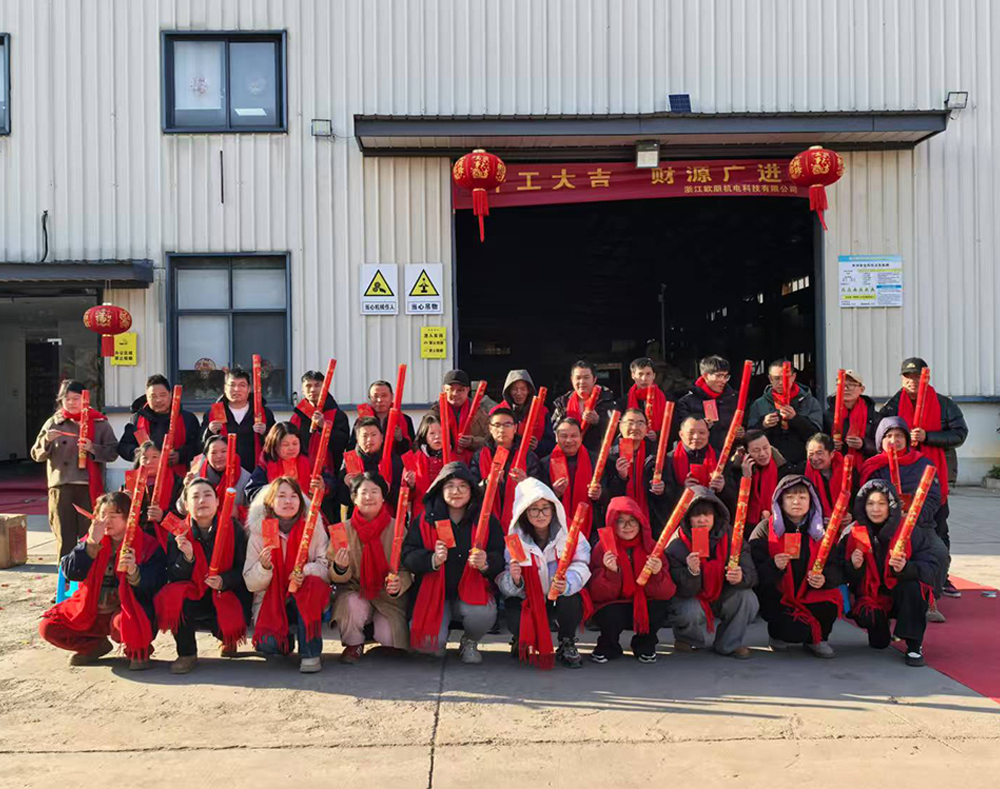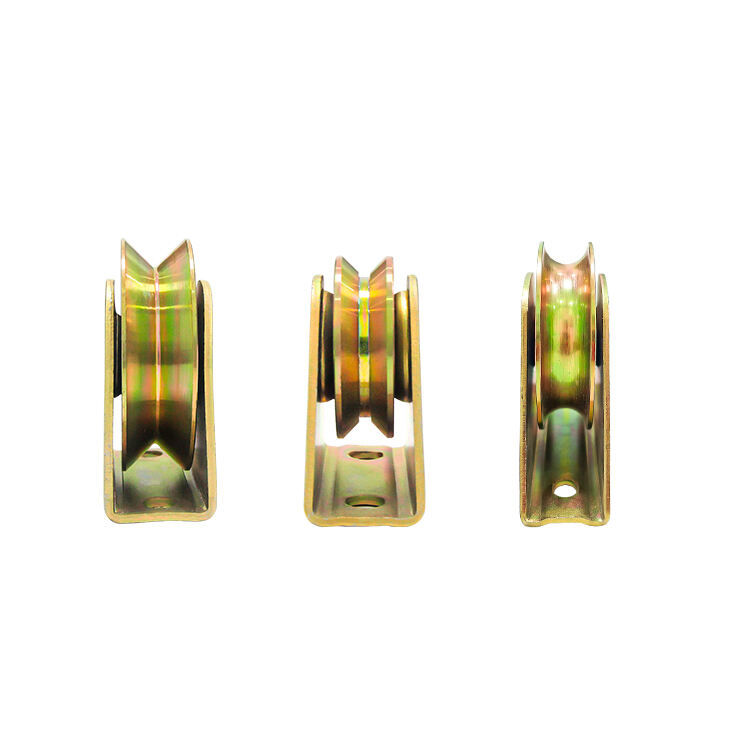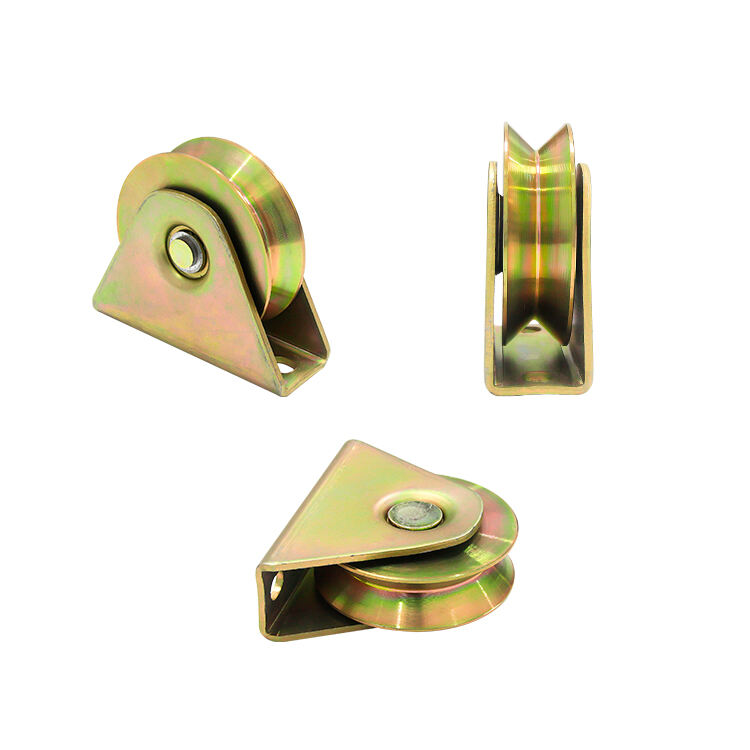Evolution of Heavy-Duty Roller Design Principles
From Cast Iron to Advanced Alloys: Material Transformation
Back when roller manufacturing was still finding its footing, cast iron became the go to material because it was just so strong and lasted forever. People loved how these cast iron rollers could handle all sorts of heavy weights without breaking down, which is why they ended up everywhere in factories and plants. But there were problems too. The stuff was super heavy to work with, plus it tended to rust pretty badly over time. That's what pushed companies to start looking at better options. Now most manufacturers stick with modern alloys instead. Why? Well, these new materials cut down on weight quite a bit while standing up much better against rust and wear and tear. Plus they don't break as easily under stress, which matters a lot in those tough industrial settings where things get really rough on equipment day after day.
About sixty percent of roller makers have switched over to these new alloy blends according to recent industry reports, and big names like SKF and Schaeffler are leading this charge. What's interesting is how these top players keep pushing boundaries with material science advancements that actually cut costs without sacrificing quality. The newer alloys make those heavy duty rollers work better for longer periods between replacements. Maintenance crews report seeing fewer breakdowns on factory floors where these upgraded components are installed. Safety records have improved too since workers don't need to handle worn out parts as often anymore. For anyone running large scale operations, this kind of durability translates directly into bottom line savings across multiple departments.
Integration of Cantilever Systems in Sliding Gate Mechanisms
Cantilever systems are changing how sliding gates work because they offer better stability and make installation much simpler compared to old methods. Traditional sliding gates need those annoying tracks running across the ground, but cantilever gates hang above the ground instead. They rely on strong rollers and rails to stay in place. Getting rid of those ground tracks means fewer things blocking pathways and less time spent on maintenance. The whole system works really well when it rains or snows too since there's nothing stuck out there getting damaged by bad weather.
Logistics centers, warehouses, and transport hubs tend to go with cantilever sliding gates when outfitting their facilities. When paired with a good quality sliding gate motor, these systems really step up performance, allowing for much smoother and quicker access control across busy sites. Take one major logistics facility as an example they saw about a third boost in how efficiently things ran once they switched to cantilever gates. Workers noticed trucks moving through faster and spent less time dealing with gate repairs. These real world experiences show why so many industrial operators are turning to cantilever systems today. They just work better for big scale operations where reliability matters most.
Breakthroughs in Bearing Technology for Rollers
Precision Four-Bearing Systems for Vibration Control
The four bearing system has really changed how we deal with vibrations in those big industrial rollers. What makes this setup special is how it balances pressure across all points, which cuts down on those annoying vibrations that just eat away at components over time. Research from Exactitude Consultancy actually backs this up showing around 45 percent less wear when using these advanced systems instead of older models with only two bearings. This means machines last longer and perform better overall. For anyone working with heavy duty sliding gates, getting this kind of vibration control makes a world of difference in day to day maintenance costs and operational efficiency.
Self-Lubricating Bearings in Automatic Gate Openers
Self lubricating bearings have changed the game when it comes to maintaining automatic sliding gate systems. The way they work is pretty simple actually these bearings contain their own lubrication system which keeps friction at bay while in operation, so there's less wear overall and far fewer maintenance headaches down the road. According to some industry research, facilities switching to these bearings often see around a 30% drop in maintenance expenses simply because nobody needs to apply extra lubricant all the time anymore. Big names in the bearing business such as SKF and NTN Corp are really pushing forward with this tech. Their products help keep gates running smoothly for longer periods without unexpected breakdowns, something property managers definitely appreciate during busy seasons when every minute counts.
IoT-Enabled Smart Bearings for Predictive Maintenance
Smart bearings connected to the Internet of Things are changing how maintenance gets done, basically letting machines tell us when they need fixing instead of waiting for breakdowns. The sensors inside these bearings keep an eye on things such as vibrations, heat levels, and what kind of weight they're carrying all day long. When companies switch to this predictive approach, they save tons of time because they fix problems before equipment actually breaks down. Some studies point out that factories using these smart systems see their downtime drop around 25 percent according to Globe Newswire reports from last year. Looking ahead, manufacturers who adopt this tech early will probably find themselves way ahead of competitors still relying on old school maintenance schedules. The bearing industry itself might look completely different in five years once everyone catches on to what these little sensor packed components can do for productivity.
Advanced Materials Reshaping Roller Performance
Polymer-Composite Wheels for Coastal Applications
Coastal areas pose real problems for regular metal wheels because of all that salt and moisture in the air. Traditional steel or aluminum just can't take it, corroding pretty quickly when exposed to sea spray and humidity. That's where polymer composite wheels come in handy. These materials stand up much better against saltwater damage while still being tough enough for heavy duty work. Take the shipping industry for instance marine terminals have switched to composite wheels on their equipment and seen them last way longer than standard metal ones. Same story at construction sites along the shorelines workers report spending less money overall since they don't have to replace wheels every few months due to rust issues. The bottom line is these composite options save cash in the long run even though they might cost a bit more upfront.
Anti-Corrosive Coatings in Sliding Gate Motors
Sliding gate motors are lasting much longer thanks to anti-corrosion coatings that shield them from weather damage. Zinc rich primers work well alongside epoxy coatings to stop rust from setting in, something absolutely necessary when gates need to keep working properly day after day. Field tests show these protective layers can double or even triple motor life in places where salt air or extreme temperatures would normally cause problems. We've seen this firsthand along the coast where motors coated with specialized marine grade products stay rust free for years while uncoated ones start failing within months. Manufacturers are now developing eco friendly alternatives that last just as long without harmful chemicals, making it easier for businesses to maintain reliable access control systems no matter what kind of climate they operate in.
High-Speed Ceramic Hybrid Rollers
Ceramic hybrid rollers designed for high speed bring real benefits to industries needing fast operations. These components stand out because they resist wear better than traditional options and handle high speeds without breaking down. That's why manufacturers in automotive assembly plants and other high-volume production settings rely on them so much. The main perks? Less friction during operation means machines run smoother, and the longer lifespan cuts down on replacement costs. Some recent breakthroughs in ceramic materials have led to new patent filings showing how manufacturers are tweaking compositions to get even better results when things get tough. For companies running equipment at top speeds day after day, these rollers have become the go-to choice, pushing what we expect from industrial roller technology in terms of both speed and lasting power.
Innovative Applications in Heavy Machinery
Mining Conveyor Systems with Dynamic Load Capacity
Conveyor systems form the backbone of most mining operations, particularly when it comes to managing variable mineral loads that can swing dramatically throughout the day. Recent advances in roller technology have really transformed what these systems can do, making them much more dependable under tough conditions. Some mines report their newer setups can carry around 25% more weight than equipment they retired just a few years ago. Better roller designs mean operators can fine tune systems for particular site requirements, which translates into fewer operational hiccups and less time spent fixing breakdowns. One large mine recently shared their experience with custom built rollers designed specifically for their heavy duty needs. These special rollers cut down on maintenance intervals while pushing daily output up by about 15%, according to their reports.
Heavy-Duty Door Hinge Integration in Industrial Settings
When industrial facilities install heavy duty door hinges combined with roller systems, they often see a real boost in how things run day to day. These setups work especially well in places that need constant traffic control and solid hardware solutions, think about big manufacturing floors or those massive distribution hubs we all hear so much about. Take warehouses for instance, many report around a 20% cut in repair bills after switching to better door systems because they just hold up longer and move smoother without getting stuck. There's also plenty to consider from an engineering standpoint though. Things like how weight gets spread across the system and whether it will actually fit with what's already there matter a lot during installation. Getting this right means operations flow better overall, plus other parts of the facility don't get worn out so fast either.
Cantilever Sliding Gate Roller Configurations
Getting the right cantilever sliding gate roller setup makes all the difference when it comes to smooth, quiet automated gate operation without anyone noticing. Different installations need different approaches depending on whether it's a home driveway or something big like an industrial complex. Engineers look at how weight gets spread out across the system, what keeps things stable, and how well they stand up against stuff like strong winds or flying debris. Take those secure facilities where security is paramount - many installers will go with three rollers instead of two because it gives better balance and faster movement when needed. Facility managers who've actually worked with these systems report significantly less noise complaints from neighbors and far fewer maintenance calls over time. They just work better day after day, which explains why so many commercial properties stick with them despite the initial investment.
Sustainability-Driven Design Innovations
Energy-Efficient Roller Systems for Reduced Friction
Roller systems that save energy play a big role in cutting down friction, boosting how well things work, and helping companies be greener. Many modern systems now use lighter materials such as composite blends along with specially crafted surfaces that just don't create as much drag when moving parts around. When there's less effort needed to get components rolling or spinning, this means factories consume far less power overall. Some research showed that switching to better roller designs can slash energy costs during operations by nearly 30 percent, which makes a real difference for the environment too. Factory managers tell us these improved rollers do more than just save money on electricity bills they tend to last longer between replacements as well, so companies aren't constantly buying new equipment. Getting rid of unnecessary friction remains important because every little bit saved adds up over time, especially when industries across the board are under pressure to reduce their carbon output and operate in a more environmentally responsible manner.
Modular Designs Supporting Circular Manufacturing
Roller manufacturers are starting to see modular design as a game changer when it comes to making things work better within circular economy frameworks. With these kinds of designs, parts can just be swapped out or upgraded instead of throwing away whole systems, which cuts down on waste and saves resources over time. When something breaks down, fixing it becomes much simpler because everything fits together like puzzle pieces. This means rollers last longer before needing replacement, creating what many call a more sustainable way of producing goods. Some companies have already jumped on board with modular setups and seen real results. One major player in the industry switched to modular construction methods and managed to slash waste by around 40 percent while also cutting down how long machines sit idle during maintenance periods. Stories like this show why modularity matters so much for circular manufacturing approaches today, helping factories run cleaner and smarter at the same time.
Table of Contents
- Evolution of Heavy-Duty Roller Design Principles
- From Cast Iron to Advanced Alloys: Material Transformation
- Integration of Cantilever Systems in Sliding Gate Mechanisms
- Breakthroughs in Bearing Technology for Rollers
- Advanced Materials Reshaping Roller Performance
- Innovative Applications in Heavy Machinery
- Sustainability-Driven Design Innovations




